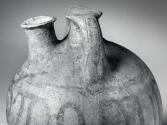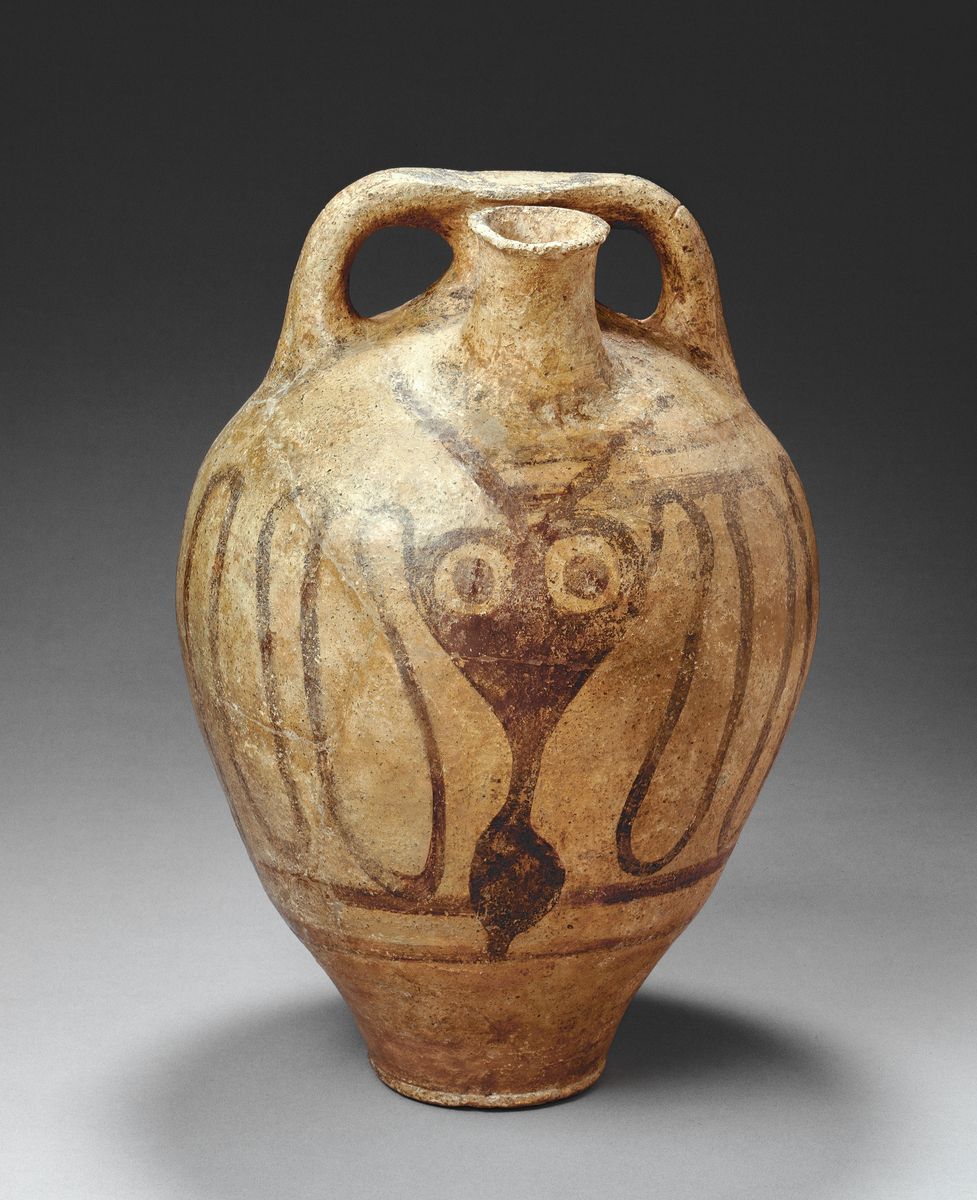Stirrup Jar
Culture: Minoan
Period: Late Minoan III
Date: ca. 1300-1200 B.C.
Place made:Crete, Greece
Medium: Terracotta
Dimensions:
h. 14 in. (35.8 cm); diam. 10 in. (25.2 cm)
Credit Line: Gift of Gilbert M. Denman, Jr.
Object number: 86.134.17
Provenance: sold by Galerie Günter Puhze, Freiberg, to Gilbert M. Denman, Jr. (1921-2004), San Antonio, 1983; Gilbert M. Denman, Jr. by gift to San Antonio Museum of Art, 1986
Exhibition History: “Mediterraneo—Egipto, Grecia y Roma: Vidrio, Escultura y Relieves de la Antiguedad Clasica,” Museo del Vidrio, Monterrey, Mexico, April 27-Nov. 7, 2004
Published References
H.A. Shapiro, C.A. Picon, and G.D. Scott, III, eds., Greek Vases in the San Antonio Museum of Art (San Antonio, 1995) p. 46, no. 5
H. W. Haskell, R. E. Jones, P. M. Day, and J. T. Killen, Transport Stirrup Jars of the Bronze Age Aegean and East Mediterranean (Philadelphia, 2011), 117, 134, no. CYP02, pl. 1.
J. Powers and J. Johnston, eds., San Antonio Museum of Art: Guide to the Collection (San Antonio: San Antonio Museum of Art, 2012), 33.
Label Text
Incised into each handle of this jar is a sign typical of the Cypro-Minoan script. The marks indicate that this Cretan vase had probably been exported to Cyprus or another destination in the eastern Mediterranean. Similar jars, used to transport olive oil and wine, have been found in southern Italy, Cyprus, coastal Anatolia, and the Levant.
(Jessica Powers, 2008)
(Jessica Powers, 2008)
On view
The San Antonio Museum of Art is in the process of digitizing its permanent collection. This electronic record was created from historic documentation that does not necessarily reflect SAMA's complete or current knowledge about the object. Review and updating of such records is ongoing.






 This resource has been made possible in part by the National Endowment for the Humanities: Exploring the Human Endeavor.
This resource has been made possible in part by the National Endowment for the Humanities: Exploring the Human Endeavor.
